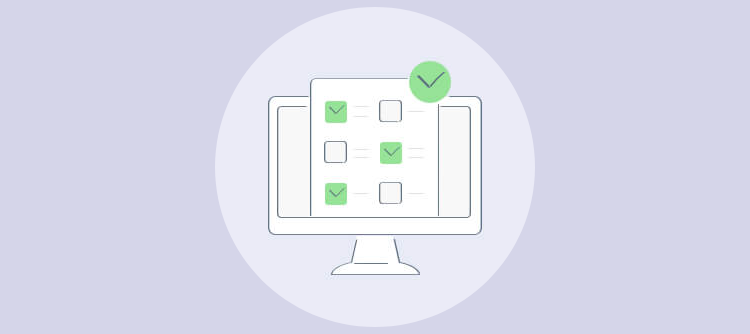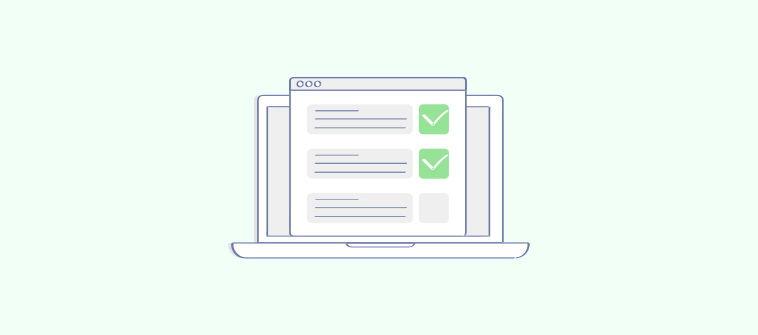Ever hired someone who seemed perfect on paper but turned out to be a total mismatch? It happens more often than you think, and it can cost your company big time – we’re talking up to $240,000! But there’s a way to avoid those expensive hiring blunders: pre-employment assessment tests.
These tests are like x-ray vision for your hiring process, revealing hidden talents and potential red flags that you just can’t get from a resume. This blog post explores the incredible benefits of these tests, the different types available, and the secrets to using them effectively.
Let’s start by understanding how pre-employment testing works and why employers are increasingly relying on this process to find the best candidates.
What Is Pre-Employment Testing?
Pre-employment testing is a structured hiring process that evaluates candidates through a series of targeted activities and evaluations. These steps may include technical challenges, behavioral assessments, and role-based simulations, all designed to measure a candidate’s capabilities and fit for a specific position.
The process emphasizes consistency, with each step carefully designed to collect actionable insights. It typically begins with identifying the key attributes required for the role, followed by creating assessments tailored to measure those qualities.
Why Do Employers Use Pre-Employment Testing?
Employers use pre-employment testing processes to create a streamlined, objective approach to recruitment. Here’s why this method is valuable:
- Standardized hiring steps: Ensures every candidate undergoes the same evaluations, reducing bias.
- Comprehensive candidate analysis: Includes structured phases like skill evaluation, situational exercises, and feedback reviews.
- Efficient filtering: Helps manage large applicant pools by organizing the process into clear, manageable stages.
- Tailored processes for roles: Allows hiring teams to align activities with the unique needs of each position.
- Informed decision-making: Combines practical evaluations with measurable results for confident hiring decisions.
This process-driven approach ensures that recruitment is thorough, equitable, and aligned with organizational goals, providing a robust framework for identifying the best candidates.
What Is a Pre-Employment Assessment Test?
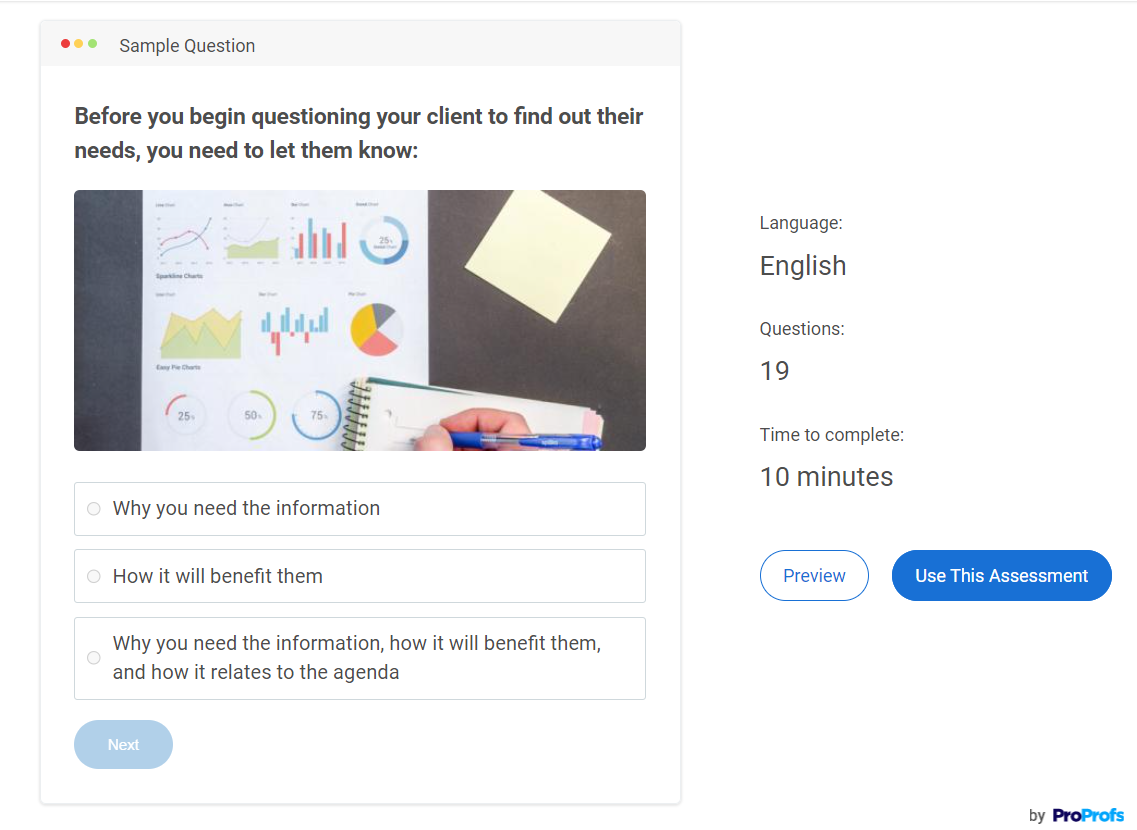
Pre-employment assessment tests are standardized questions that help gather relevant data on candidates during the hiring process. They are a reliable means of gaining insights into the capabilities and traits of prospective employees.
These tests have become wildly popular in recent years as businesses that use online assessment software have a leg-up against those that don’t.
That is because a pre-employment test includes (but is not limited to):
- Video Introductions
- Personality Assessment
- Skill Assessment
- Knowledge Assessment
Assessment tests help you get a holistic view of your candidates and, most importantly, a data-based ranking system. So, you don’t make the hiring move only based on your gut feelings!
Watch: How to Create an Assessment Online
What Are the Types of Pre-Employment Assessment Tests?
Depending on the type of test you use, pre-employment assessments can help provide data that you can use to determine a candidate’s ability to perform in the workplace. The most commonly used types of pre-employment tests are:
Cognitive Aptitude Test
Cognitive aptitude tests predict how a candidate will perform on the job based on their cognitive abilities. The candidates’ answers in the test can help you learn how they can handle and respond to challenging situations.
The General Aptitude Test, commonly known as GAT, is a perfect example of a pre-employment assessment test that assesses a candidate’s cognitive aptitude; it tests logical, verbal, and analytical ability.
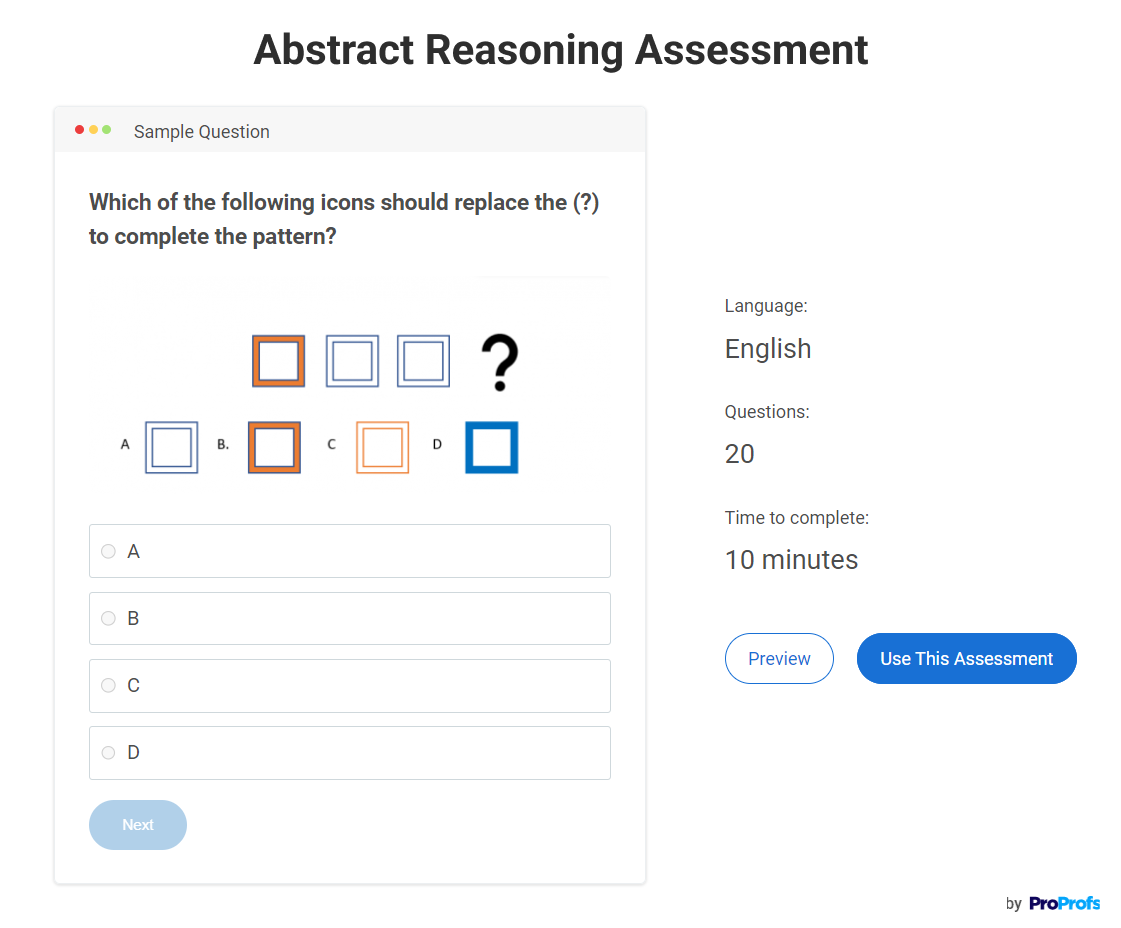
Skills & Knowledge Test
Skill tests and knowledge tests are used to assess if the candidate has the essential skills and knowledge required to perform a particular job.
With a skill test, you can assess the level of knowledge and skill the candidate has mentioned on their resume.
For example, you want to hire a candidate for the role of social media manager. In that case, you can use a social media marketing skills assessment to assess your candidates’ social media management.
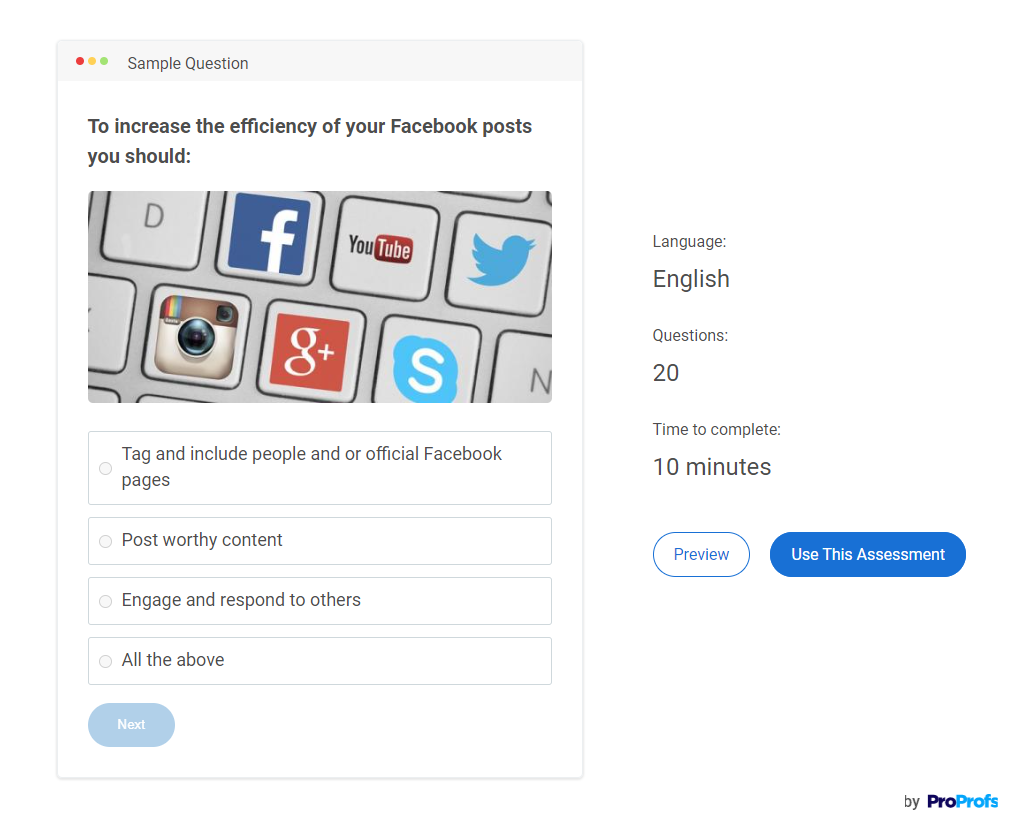
Personality Assessment
Personality assessments or personality tests are commonly used to assess if candidates fit within the company’s culture.
You can use this assessment to see if the candidate has traits like extraversion, agreeableness, conscientiousness, openness to experience, and neuroticism.
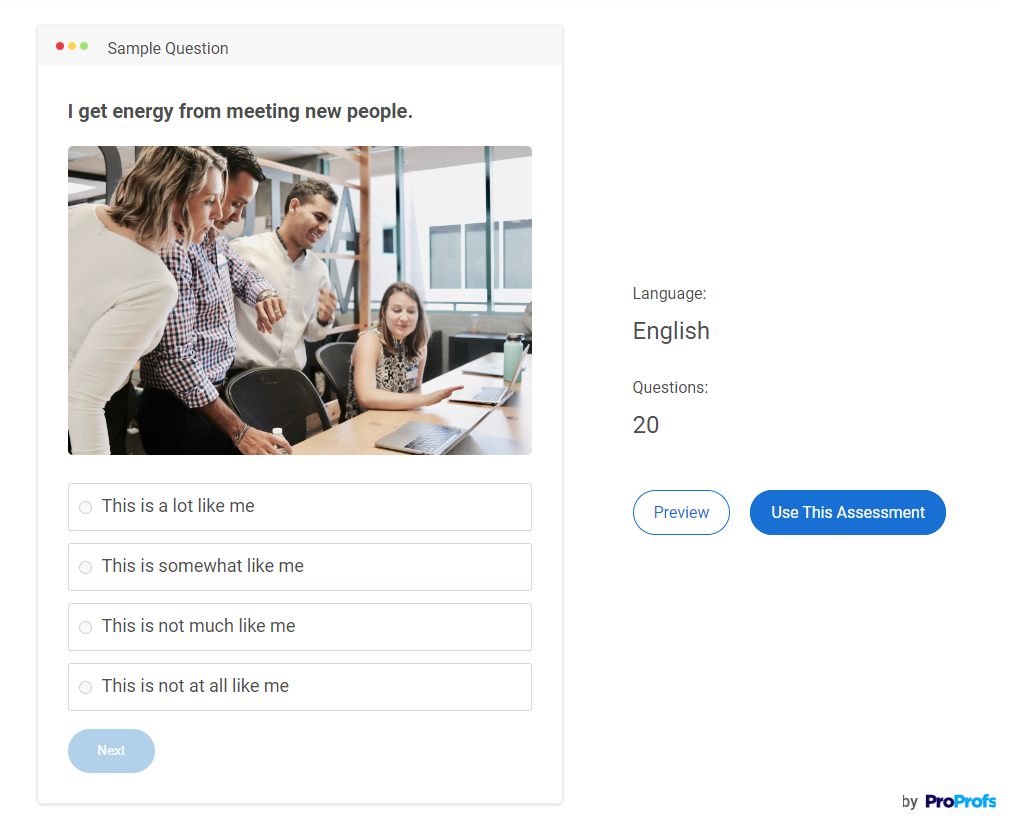
These are some of the most popular pre-employment personality tests used by employers:
- The Caliper Profile
- The Myers-Briggs Type Indicator
- The SHL Occupational Personality Questionnaire
- The Hogan Personality Inventory (HPI)
- The DiSC Behavioral Inventor
Emotional Intelligence Tests
An emotional intelligence test assesses the candidate’s ability to understand other people’s emotions and their own.
Emotional intelligence forms the core of successful teamwork and is thus an essential trait for leadership and managerial roles.
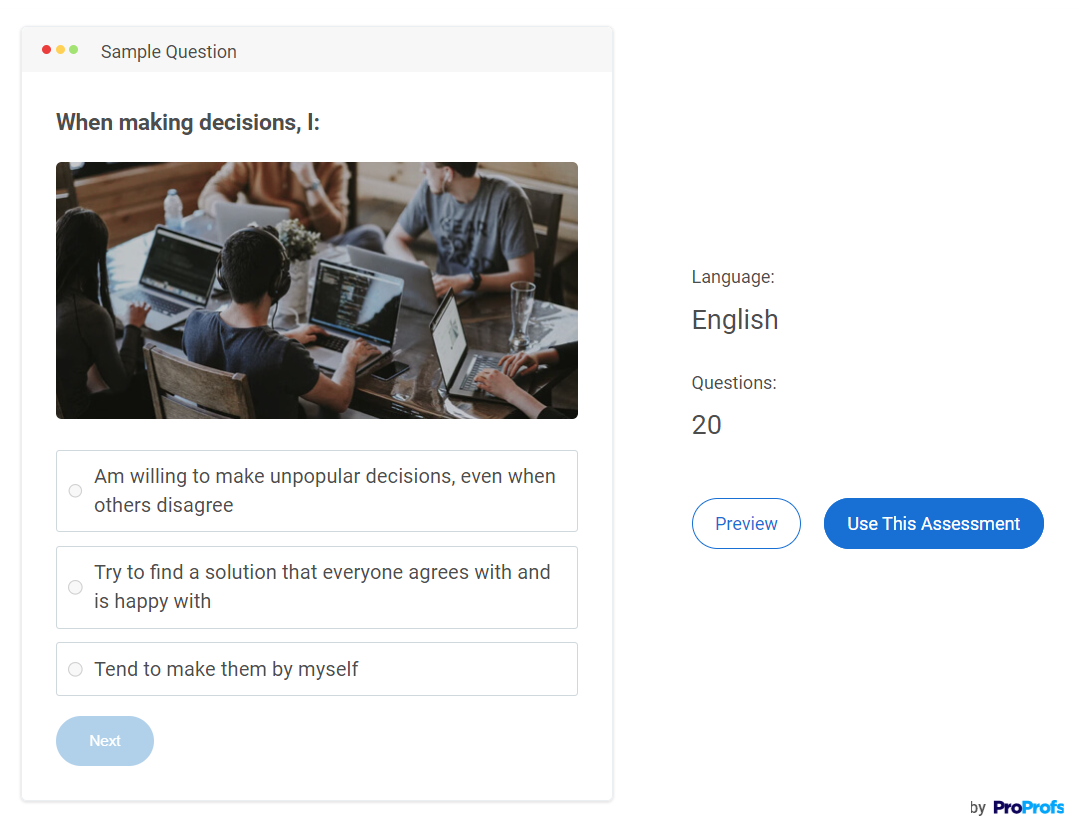
Soft Skills Assessment
Hard or technical skills aren’t the only skills you want to assess when hiring someone. You must also test soft skills like communication, time management, etc.
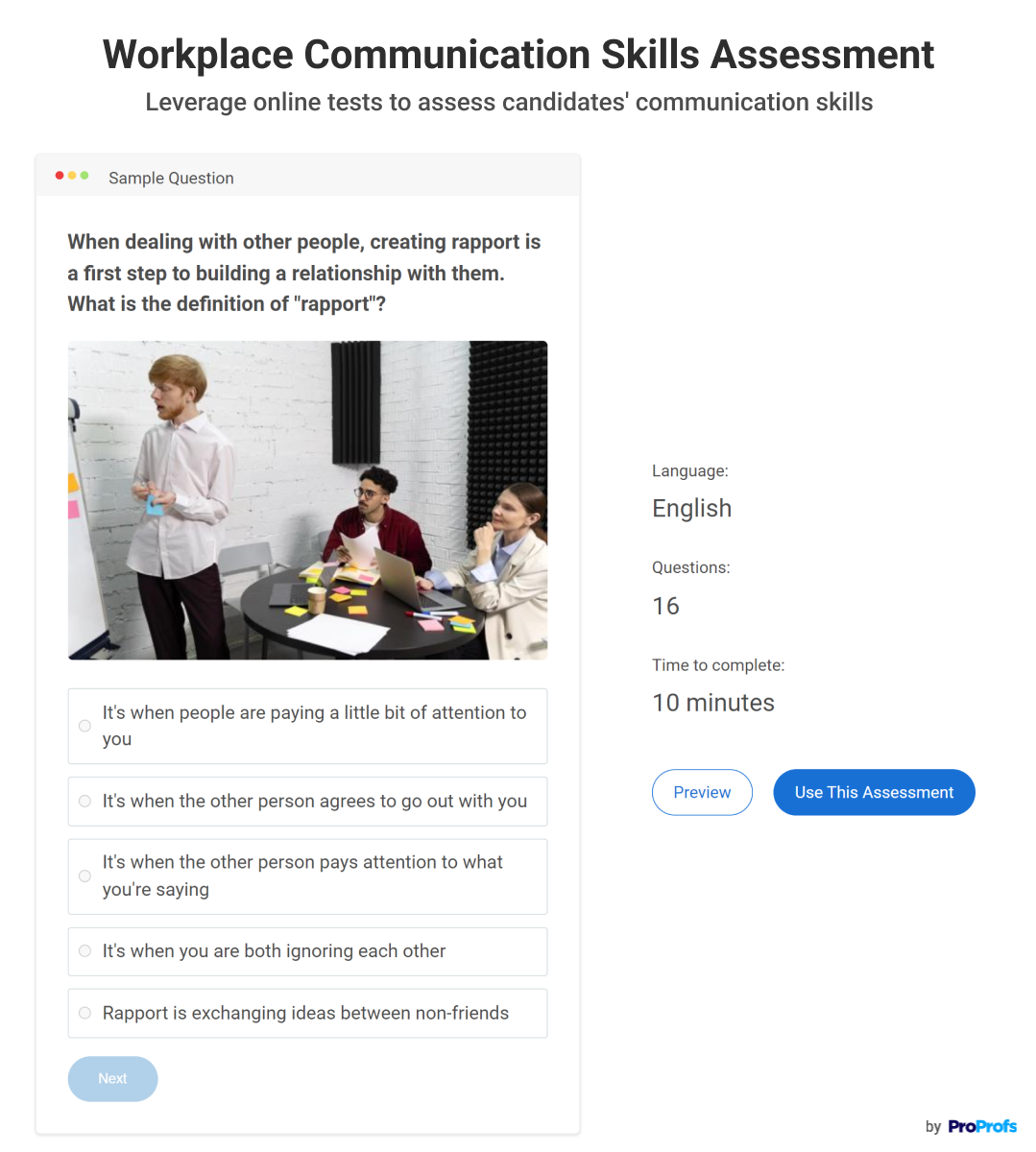
Assessing soft skills enables you to hire candidates who not only possess the required knowledge for a position but also have the characteristics to collaborate effectively and be consistently productive.
Here are the top soft skills you need to look for in candidates:
- Workplace communication
- Time management
- Change management
- Leadership skills
- Email etiquette
- Conflict resolution
- Business etiquette
- Project management
- Social skills
- Negotiation skills
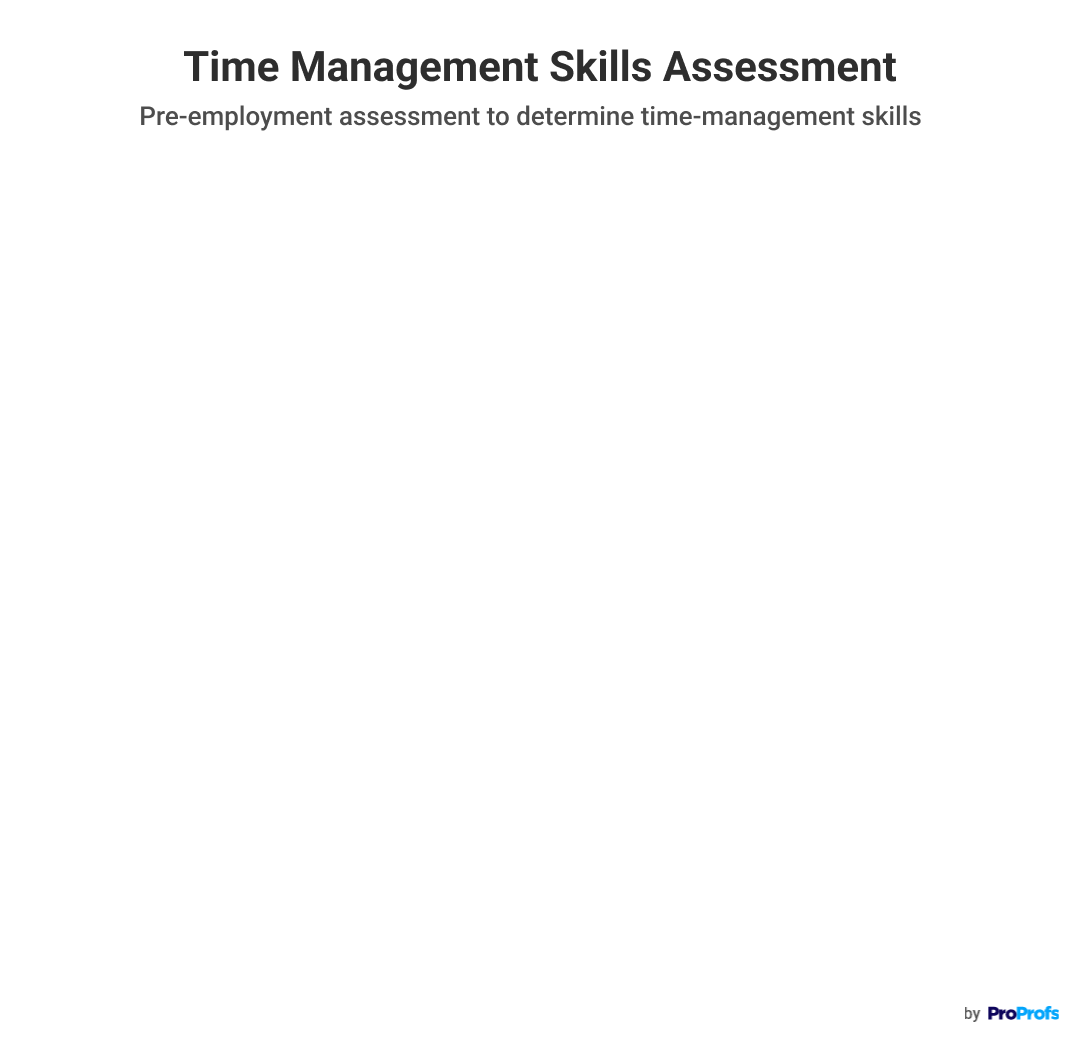
Safety & Compliance Assessments
Training new employees on compliance regulations and matters related to workplace safety and health is a key component of every employee onboarding program.
Considering how important it is to ensure safety and compliance in business, it is best to hire candidates with a good knowledge of these subjects.
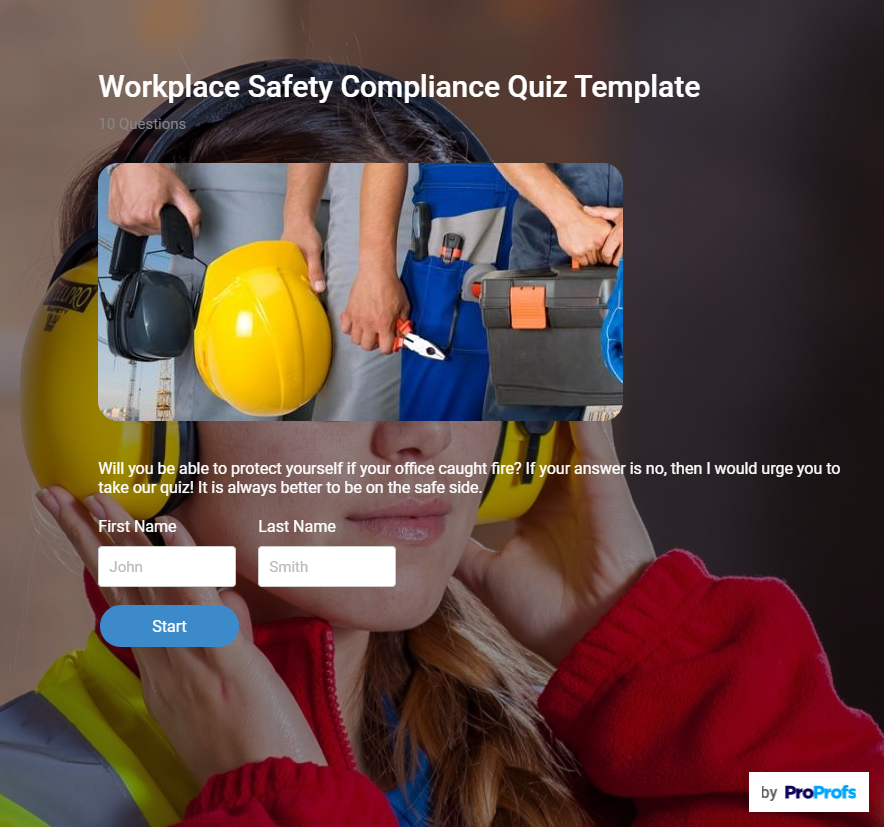
By doing this, you can reduce training time for new employees and onboard people who are safety-minded and follow the law, quickly making them part of your compliance culture.
Conflict Management Style Assessment
A conflict management style assessment lets you determine a person’s way of dealing with workplace disagreements.
You can include this assessment as part of your recruitment process to enable leaders to manage new employees better and train them on conflict resolution skills according to their conflict style.
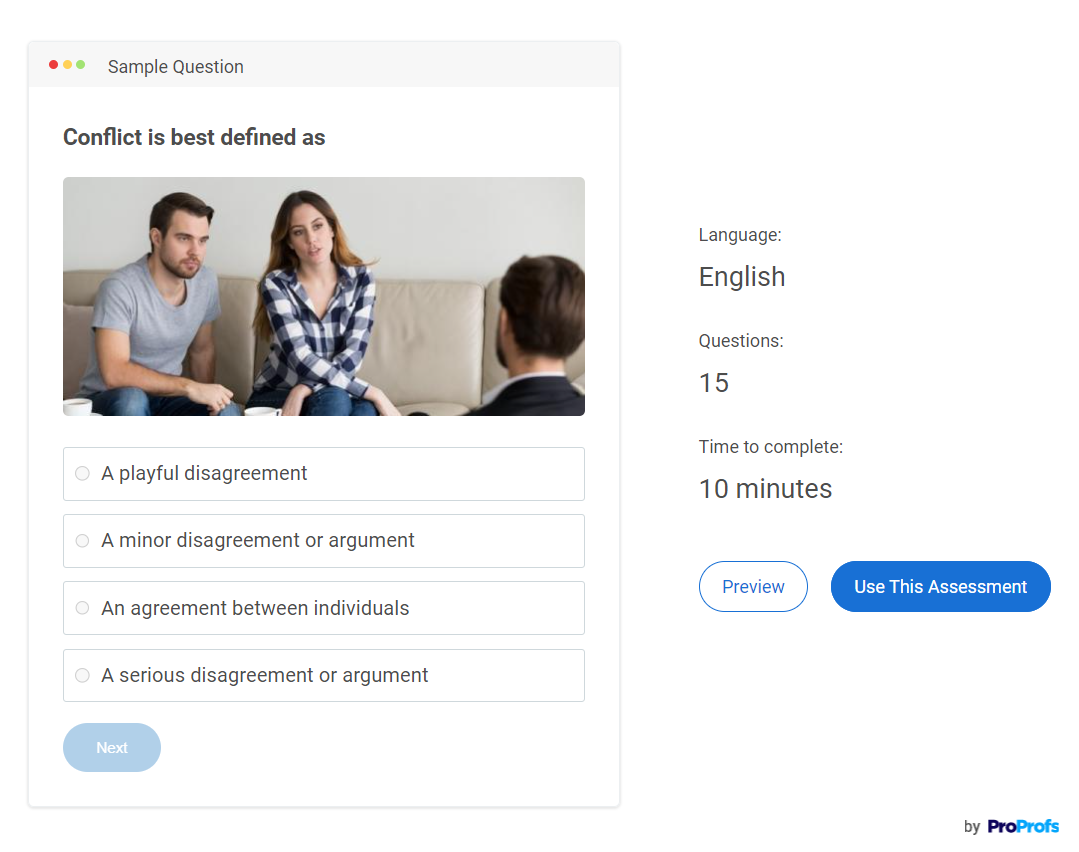
Integrity Tests
Integrity tests are used to determine how reliable an applicant is regarding integrity and ethics. For example, an integrity test may include the following questions:
- What would you do if a manager assigned you a task that breaches company policy?
- Is it okay from an ethical standpoint to publish work samples on one’s website?
- Have you ever lied to a reporting authority in a previous job?
- Would you do something illegal to satisfy a client?
You can conduct an integrity test in a couple of different ways:
- Conduct a video interview quiz and ask the candidates to give a comprehensive answer to your questions by recording videos.
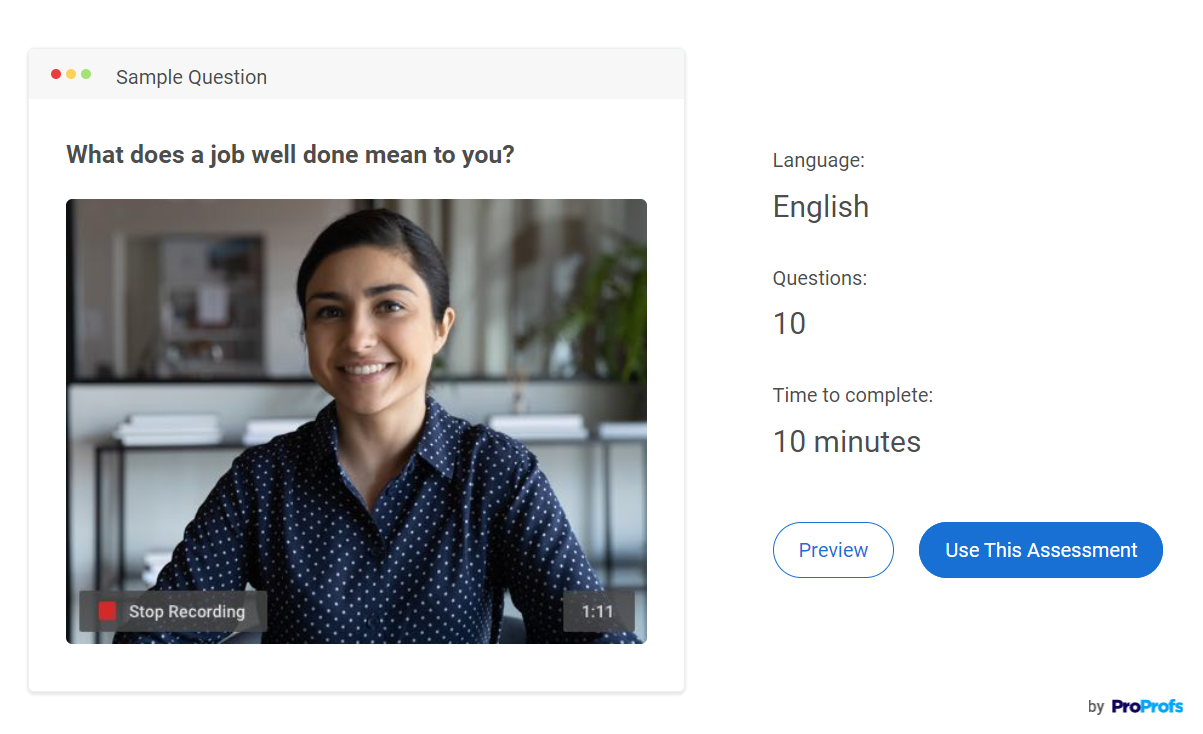
- Conduct an assessment test to check candidates’ knowledge about integrity, ethics, and business conduct.
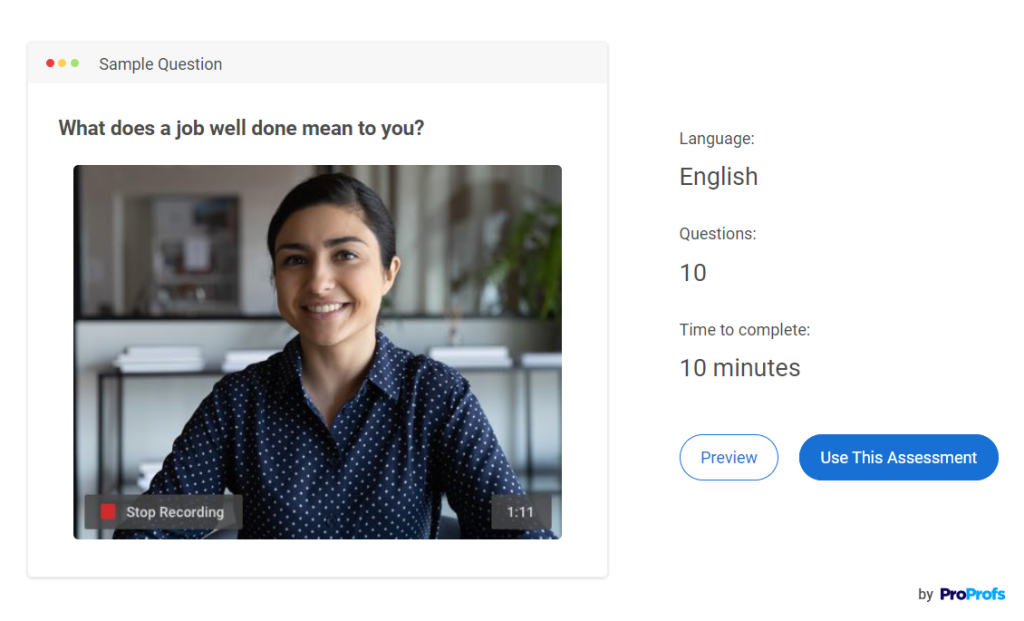
FREE. All Features. FOREVER!
Try our Forever FREE account with all premium features!
Why Are Pre-Employment Assessments Important?
Pre-employment assessments are crucial because they provide an objective, systematic way to evaluate candidates, reducing reliance on subjective judgment.
These assessments identify candidates whose skills, abilities, and personalities align with job requirements and company culture, ensuring a better fit and promoting fairness and consistency in the hiring process.
For example, when hiring a software developer, a company can use coding tests to assess technical skills, cognitive tests for problem-solving abilities, and personality assessments for cultural fit.
This thorough evaluation ensures the selected candidate not only meets technical requirements but also integrates well with the team, contributing to long-term success.
How to Determine What Pre-Employment Testing Is Needed
Determining the appropriate pre-employment tests for your hiring process involves a thorough understanding of the job requirements and the specific attributes necessary for success in the role. The KSAO approach—Knowledge, Skills, Abilities, and Other Characteristics—provides a structured method to identify these requirements.
Knowledge
Knowledge refers to the information required to perform a job. This includes a theoretical and practical understanding of a subject. To determine the knowledge needed:
- Job Analysis: Conduct a detailed job analysis to identify the key areas of knowledge required.
- Industry Standards: Refer to industry standards and benchmarks to ensure comprehensive coverage.
- Knowledge Tests: Use assessments that measure specific areas of knowledge relevant to the job, such as technical expertise, regulatory understanding, or domain-specific information.
Skills
Skills are the proficiencies needed to perform tasks and duties effectively. These can be technical or soft skills. To determine the necessary skills:
- Skills Inventory: List the critical skills needed for the job, including both technical and interpersonal skills.
- Performance Indicators: Identify performance indicators that can be measured through skills assessments.
- Skills Tests: Implement tests that evaluate practical skills, such as coding tests for developers, writing assessments for content creators, or customer service simulations.
Abilities
Abilities are the innate capabilities required to perform tasks. These include cognitive and physical abilities. To determine the required abilities:
- Task Analysis: Break down the job into specific tasks to identify the abilities needed.
- Benchmarking: Compare against successful employees in similar roles to identify key abilities.
- Aptitude Tests: Use cognitive aptitude tests to measure abilities such as problem-solving, logical reasoning, and spatial awareness.
Other Characteristics
Other Characteristics include traits, values, and motivations that influence job performance. To determine these characteristics:
- Cultural Fit: Assess the company’s culture and values to identify traits that align with organizational goals.
- Behavioral Indicators: Identify behavioral indicators that predict success in the role.
- Personality and Integrity Tests: Utilize personality assessments and integrity tests to measure traits such as reliability, teamwork, and ethical standards.
Employing the KSAO approach, you can tailor your pre-employment assessment strategy to ensure you evaluate candidates on all critical aspects necessary for job success. This comprehensive evaluation helps you make informed hiring decisions, thereby building stronger and more effective teams.
Best Practices for Implementing Pre-Employment Testing
Before you create a pre-employment test and implement it into your hiring process, you must learn how to get the most out of it. Below, we’ve shared some pre-employment assessment test best practices that will help you make the smartest hiring decisions:
1. Choose the Right Test
You can’t use the same test for every job role you’re hiring for. Every job role requires a specific set of skills and knowledge. That’s why you must choose the proper test to assess your candidates.
Ensure that the test you choose has a range of questions that help you narrow down the focus of your assessment. You should test for skills, learn if they have the desired knowledge, and get to know them.
2. Validate the Test
Ensure the validity of the test you will use before you share it with the applicants.
Ask yourself:
Does the assessment include questions covering all the pre-employment testing aspects?
Does it include any unnecessary questions?
Eliminate any questions that do not serve your purpose to ensure the test you use for skill assessment is valid. The questions used in your assessment should help you evaluate the desired skills and predict the extent to which the candidate can perform the job.
3. Test at the Right Time
Timing is everything, especially when adding a skill test to your hiring process.
The candidates you interview are often not as technically skilled as the job role requires.
That’s when you realize all the time spent lining up the candidate for the interview has gone to waste.
So, when you create a skill test, you screen candidates in, not out.
If the volume of candidates is huge, filter the highly skilled candidates using smart reports and statistics.
This way, you can ensure that only candidates with the right skills for the job role progress further through the selection stages.
4. Use Fair Evaluation Criteria
Fair evaluation criteria ensure all candidates are assessed using consistent and unbiased standards. These criteria are based on job-related factors such as qualifications, skills, experience, and performance indicators.
Employing fair evaluation criteria can avoid discrimination, favoritism, or subjective biases in the hiring process and promote a transparent and merit-based selection process.
5. Establish Minimum Cutoff Scores
Establishing a minimum cutoff score can help minimize the chances of bad hires.
That is because the higher your cutoff score is, the more likely it is that candidates scoring above the cutoff will have the skills to excel in the job.
But how do you determine the correct cut-off score?
For that, we advise you to consider the specific dynamics of your hiring process, such as the size of your candidate pools, your applicant-to-hire ratio, and other factors.
But you must avoid setting it too high because it’ll probably filter out too many qualified people.
6. Provide Clear Instructions to Avoid Misunderstandings
You can avoid misunderstandings if you give clear instructions at the beginning of the pre-employment tests. Doing so ensures the recipients understand the expectations, requirements, and steps involved in a task or process.
Providing concise and specific instructions minimizes the chances of misinterpretation or confusion. This clarity promotes effective communication and allows individuals to follow instructions accurately, resulting in improved productivity, reduced errors, and a smoother workflow.
7. Use the Best Pre-Employment Testing Software
Well, this should have been listed at the top of the best practices, but here we are. We recommend using the best online assessment software to create and share pre-employment tests.
Why?
Because it’ll help you do the following:
- Create assessments in minutes (or even seconds)
- Shed the burden of writing down the right questions
- Help with automatic grading or scoring
- Provide detailed and insightful reports to speed up decision-making
- Test candidates no matter where they are and what device they use
- Make hiring more objective
- Manage candidate data by integrating with your HR software to keep the hiring process on track
Watch: How to Choose the Best Assessment Software
 Tips
Tips
We’d love to hear your tips & suggestions on this article!
FREE. All Features. FOREVER!
Try our Forever FREE account with all premium features!
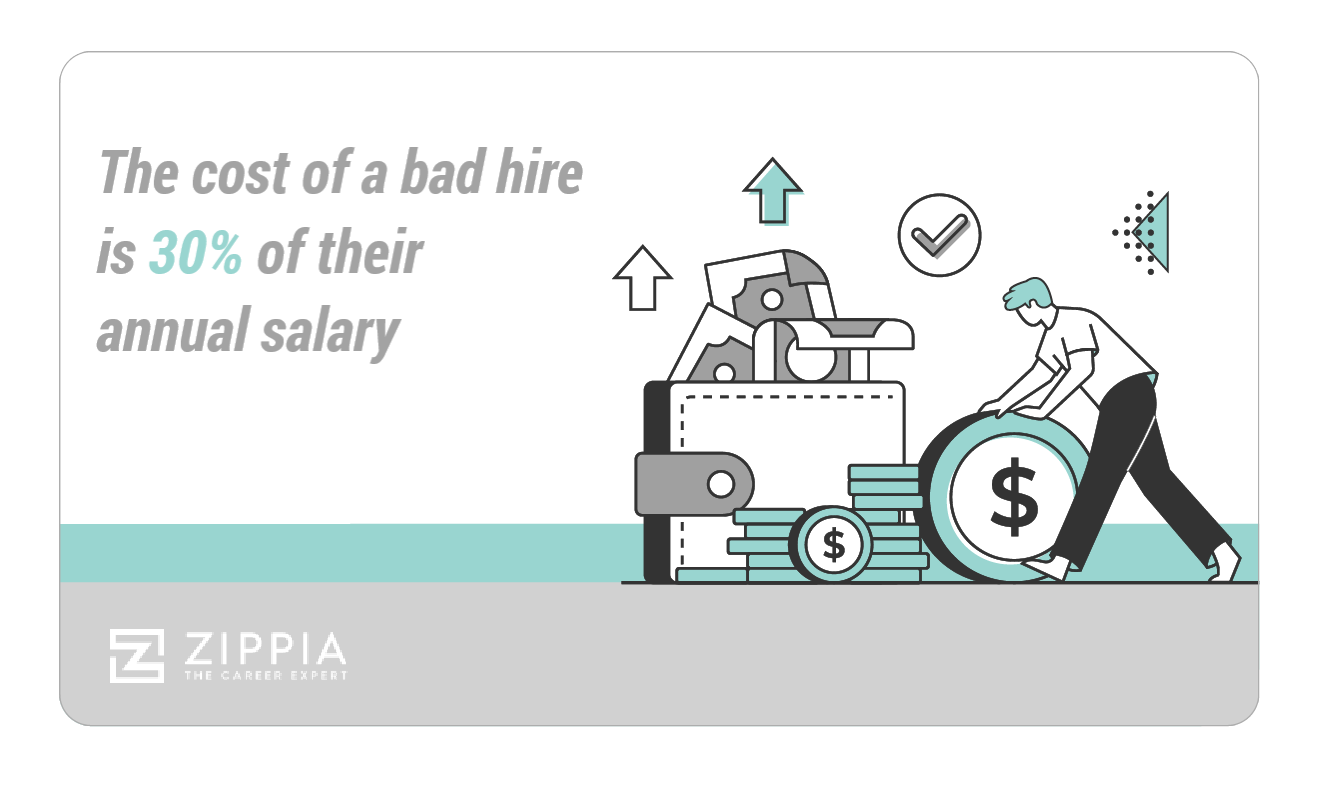
 We'd love your feedback!
We'd love your feedback! Thanks for your feedback!
Thanks for your feedback!



